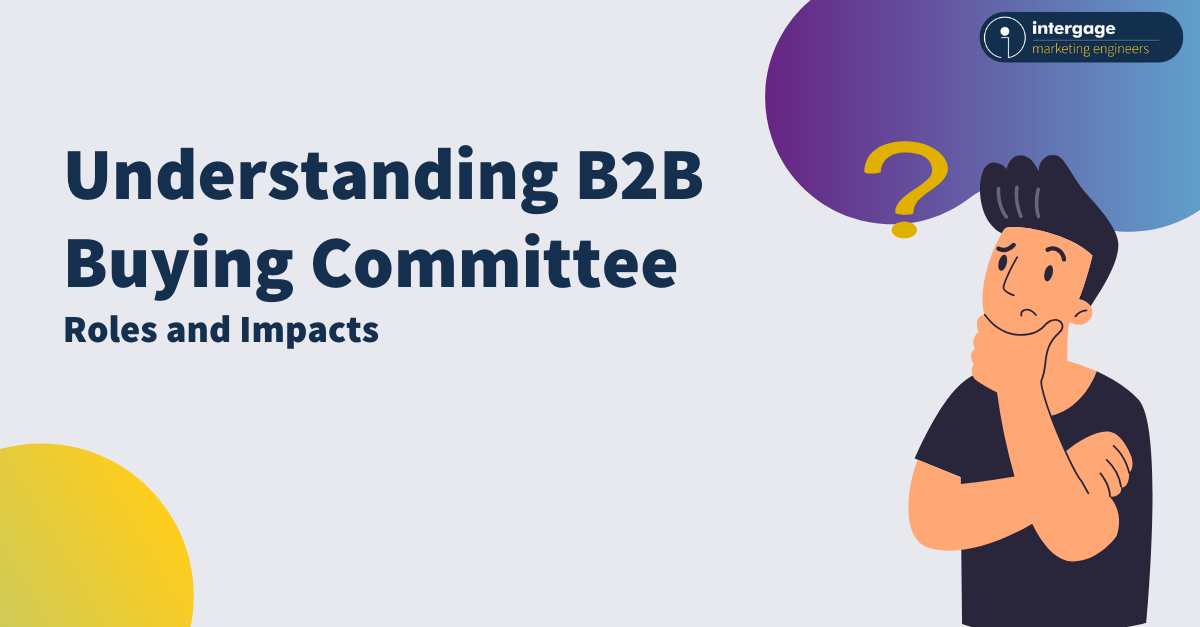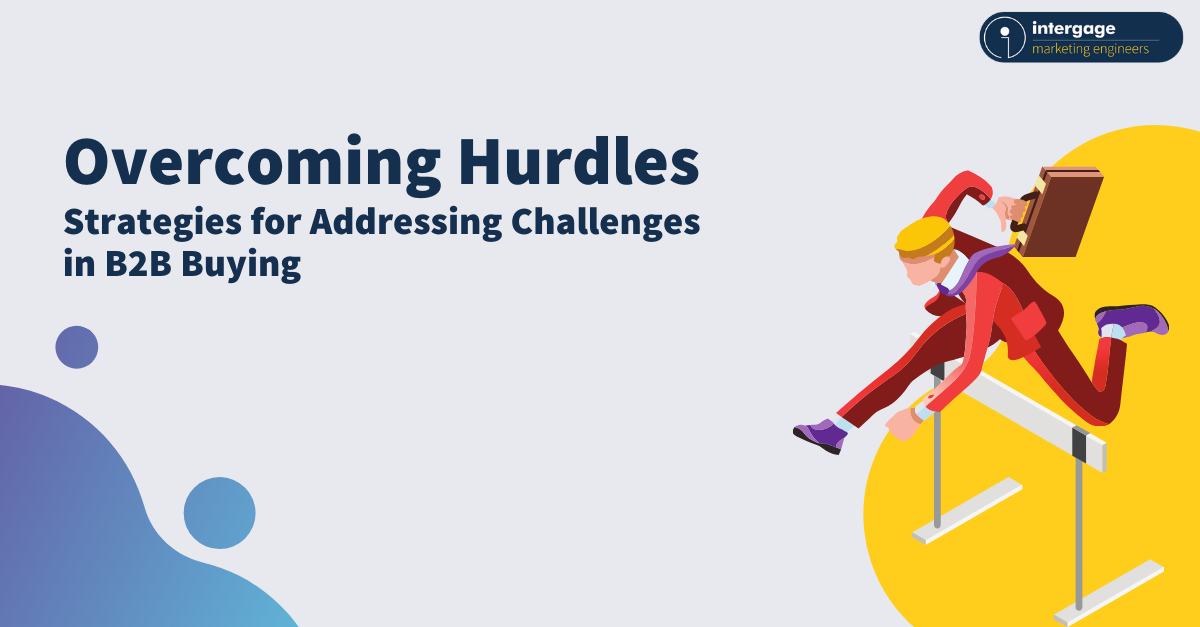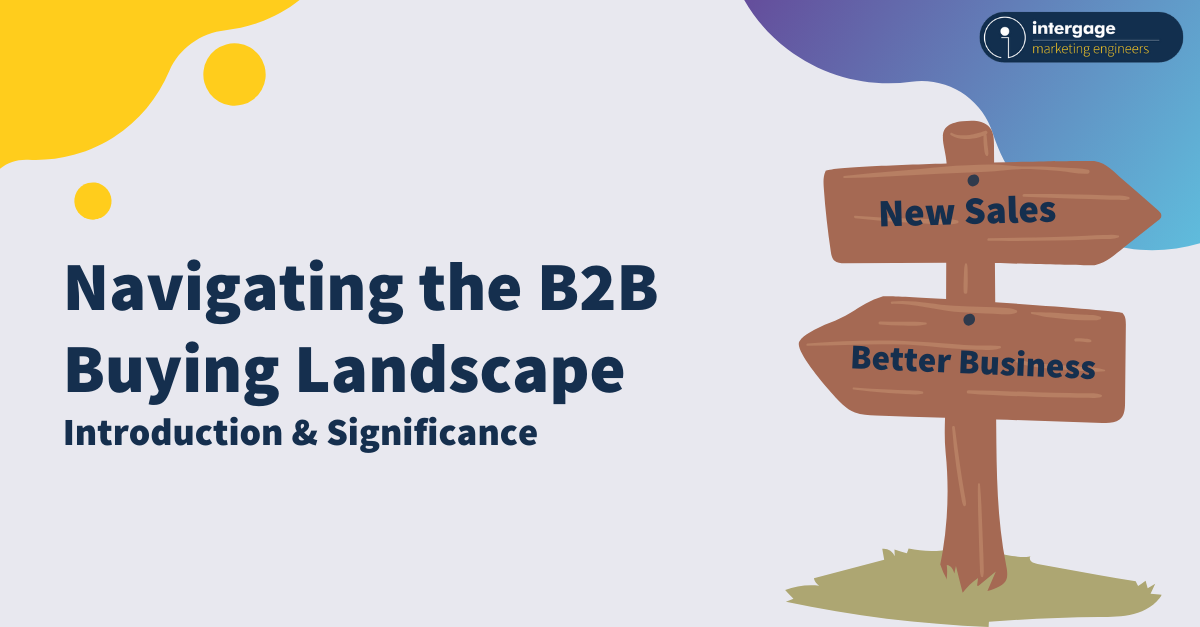Welcome to the complicated world of B2B buying, where the journey from need identification to the final purchase decision can take months if not years. Consider this “The Buying Landscape 101”, a crash course to the unique characteristics of B2B buying, confronting its challenges, and understand its pivotal “buying jobs”, not to be confused with the buying committee.
Defining B2B Buying
At its core, B2B buying is the art of one business entity procuring products or services from another. Simple, right?
However, this basic definition obfuscates the complexity that underlies the process. Unlike consumer buying, which can often be a straightforward transaction done on a website, B2B buying involves a multitude of stakeholders—each with their own priorities, perspectives, and concerns.
What starts as a simple definition quickly expands: in B2B buying, it's not just about an individual deciding whether to buy a product; it's about teams, departments, and sometimes entire organisations coming together to make informed decisions. The journey begins with the identification of a need, followed by the exploration of potential solutions, the meticulous evaluation of suppliers, and ultimately culminates in a final purchase decision.
Challenges in the Complex B2B Buying Landscape
Navigating the B2B buying landscape is a challenge: it doesn’t come with a map, or hints.
One of the primary challenges lies in dealing with intermediaries—entities that occupy a crucial position between the buyer and the end-user. These intermediaries can introduce complexity, delays, and added costs to the purchasing process, making it essential for businesses to navigate this intricate web effectively.
But even if you can manage your relationship with intermediaries, you could be hampered by economic uncertainty. The unpredictable waves of the financial markets can send shockwaves through B2B sales. If your prospective customers can’t grasp how your product or services can improve their lives, and the economic situation turns ire, they’re unlikely to commit.
Embracing digital transformation is also becoming a more pressing challenge, particularly for industries running tried and tested processes from decades past. In order to deal with those in what feels like a technological future, as well of those still prioritising paper and pen, B2B sellers have o be at the forefront of these changes, wielding digital tools to their advantage.
But even when you’ve put pen to paper, and the contract is signed, sealed, and delivered, there’s the issue of retention. Delivering impeccable post-sale support and service is not an option, but a necessity. Neglecting this, and your customers, can open the door for unwelcome customer churn.
These are non-exhaustive examples; in reality, there are dozens of potential challenges and roadblocks in B2B sales. What’s important is being aware of them, and prepared to do what it takes to make them smooth tarmac, rather than speed bumps.
Understanding the Dynamics of B2B Purchases
In the world of B2B buying, decisions are rarely made in isolation. They are influenced by a myriad of factors, each contributing to the increasingly complex buying journey. Among these factors, the needs and expectations of end-users are arguably most important to meet: the products or services on offer should align seamlessly with the end-users' requirements. After all, they’ll be the ones using the product to make their lives easier.
Furthermore, budget constraints play a significant role in shaping B2B buying decisions—admittedly something sellers cannot directly change. Accepting that part of selling B2B includes volume discounts, long-term contracts, and complex payment terms is important to understanding why your buyers act the way they do when it comes to finance.
Then there’s the procurement process: every company likely has a different one. This can include anything from requests for proposals (RFPs) and vendor assessments to non-disclosure agreements and applications for security clearance.
Beyond these considerations, B2B purchases are also guided by the overarching objectives of the buying organisation. Every buying decision should align with the broader strategic goals and mission of the company. This alignment ensures that purchases contribute to the long-term success and sustainability of the company.
Aligning Strategies with Buying Jobs
The key to successfully navigating the convoluted B2B buying landscape lies in understanding and aligning with the concept of "buying jobs." At each stage of the buying journey, there are specific jobs that need to be accomplished. These jobs are not just about making a purchase; they encompass a range of activities and objectives.
- Problem Identification: The journey begins with recognising a need or a problem within the organisation. Whether it's a need for new software to streamline operations or a requirement for specialised machinery for a specific task, the first job is to identify the issue at hand.
- Solution Exploration: Once the problem is identified, the next job involves exploring potential solutions. This phase often requires thorough research, consultation with experts, and the evaluation of various options. It culminates in the ability to gauge what is out there.
- Requirements Building: Now that there’s a vague knowledge of what’s out there, it’s time to build a list of requirements for the new purchase—what do we need it to do, exactly? This then provides the parameters for any new purchase’s features and functionality.
- Supplier Selection: With potential solutions in mind, the focus shifts to selecting the right supplier. This is where businesses consider factors such as reputation, reliability, pricing, and the ability to meet specific requirements.
- Purchase Execution: The final job in the B2B buying process is executing the purchase. This involves negotiation, contracting, and ensuring that the chosen solution aligns perfectly with the organisation’s needs.
By developing strategies that cater to, and help, these distinct buying jobs, businesses can streamline the buying journey and ensure that they are well-equipped to deal with each stage.
Mastering the B2B Buying Maze
It is vital that B2B sellers understand the dynamics and challenges facing the B2B sales market. After all, it's not just about making a sale; it's about forging lasting partnerships and aligning with the unique needs of businesses you serve. By embracing the concept of "buying jobs" and crafting strategies that resonate at each stage of the buying journey, organisations can not only navigate this complex space, but also emerge as trusted partners in their clients' journeys.
Want to learn more? Visit our ultimate guide to buyer enablement.



